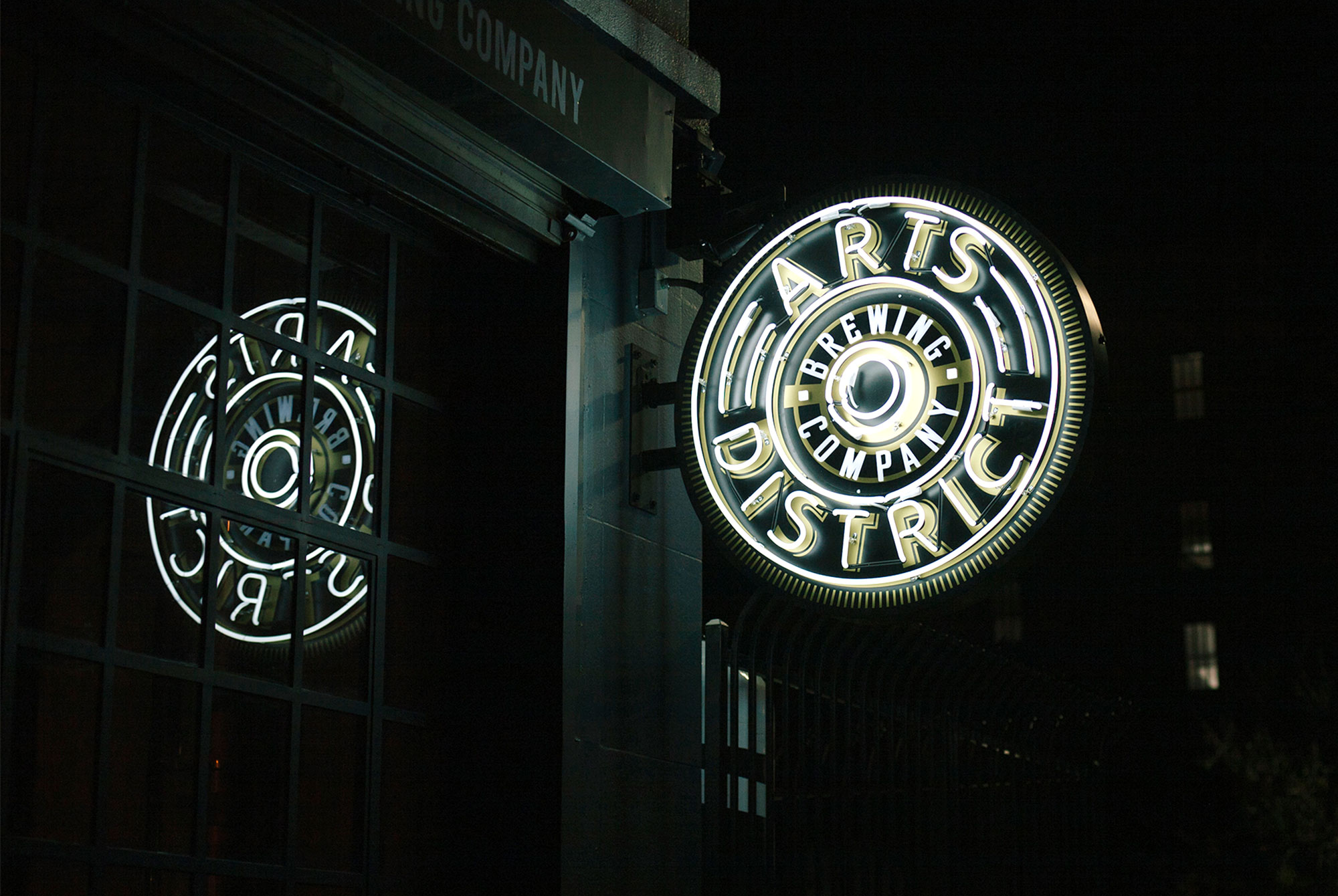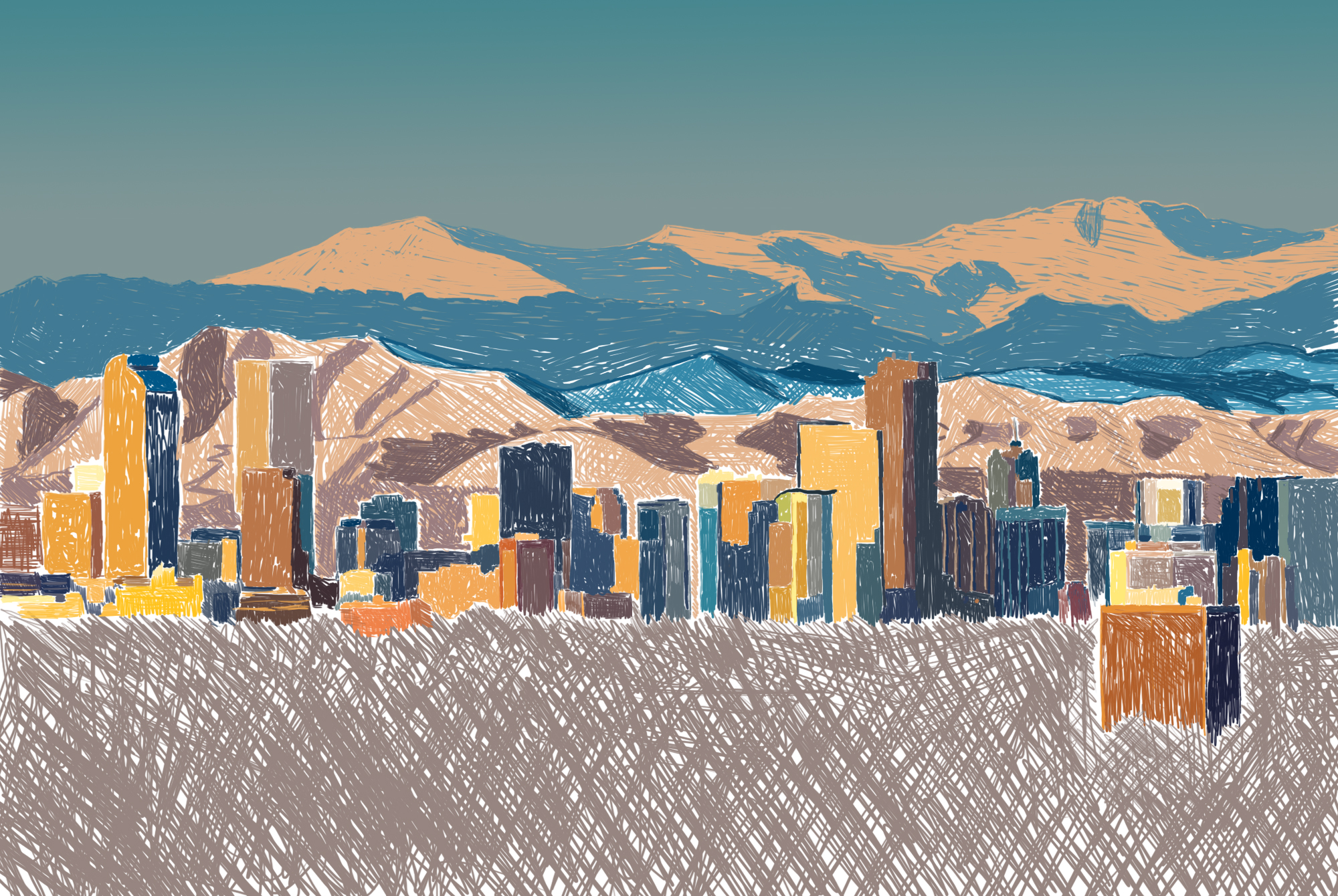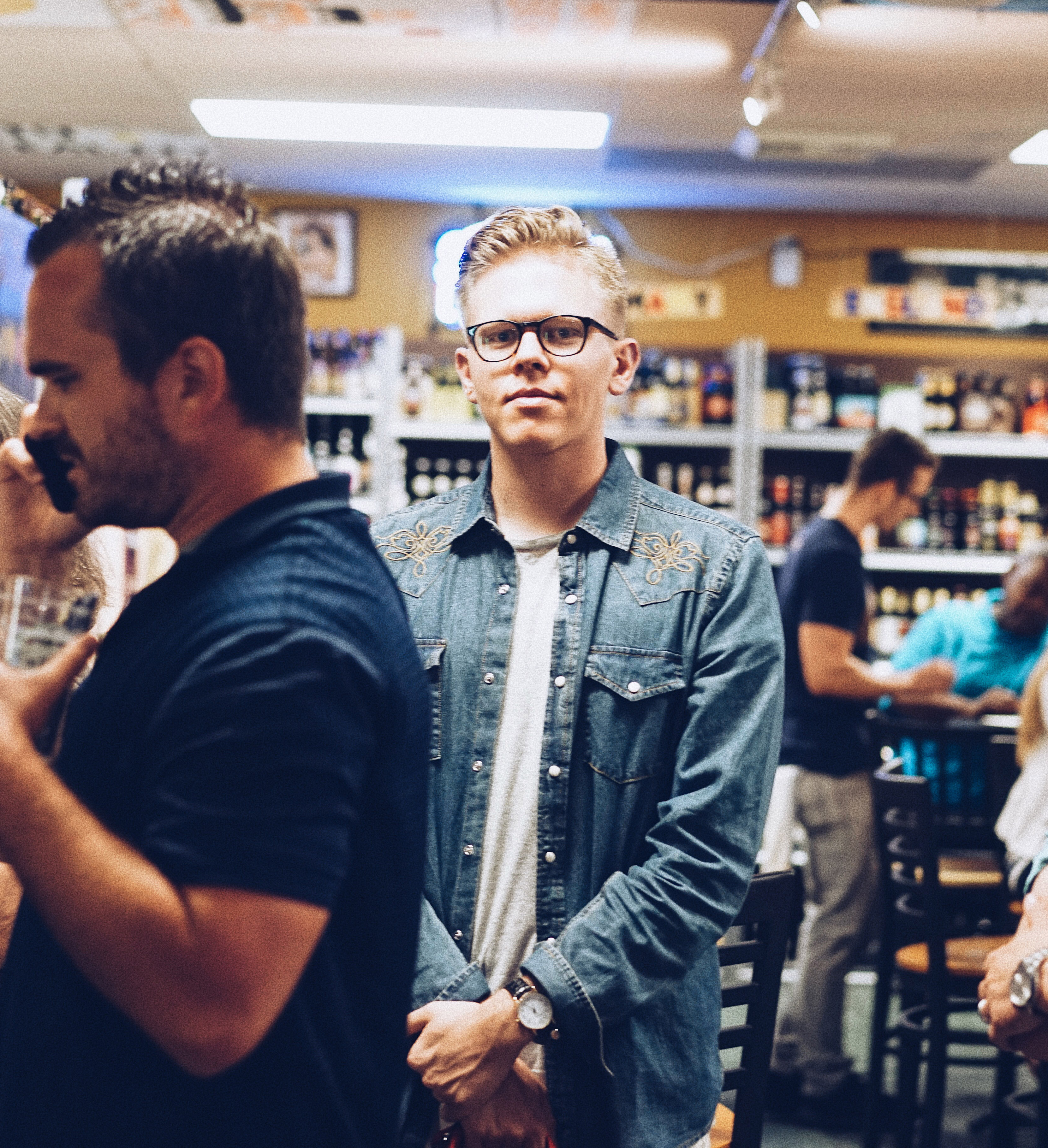Shop
Surviving a Decade in LA’s Craft Beer Scene
In a city where most places close less than a year after opening, how did Brian Lenzo hang on?
Brian Lenzo is not a new face in the Los Angeles craft beer scene. When it comes to opening top-notch brewhouses and taprooms, he’s two for two: Blue Palms Brewhouse, which opened in 2008, and Arts District Brewing Company, in late 2015.
The Blue Palms was among the first brewpubs to pop up in LA, back before the craft beer scene took hold. In the eight year span between the two openings, the number of brewpubs in America rose from 1,009 to over 1,916, but Lenzo says he watched the LA beer scene quadruple. But even so, LA is far from crowding out new brewhouses like ADBC.
“We’re all in this together,” he says of the LA scene. “We all have competing bars, but we compete together, as a team. If we all help each other out, we’ll all succeed. We share hops, tips; our job is to compete with the Millers and the Buds.”
That may be surprising to hear from a Los Angelean. The city itself has always been snobby — whether it’s the movie stars or the musicians, the permanent fixtures have always been an eclectic, competitive crew. With tourists bustling in and out of the city to see where the stars live, it can be hard to come across a “community” per se.
Sure, Los Angeleans have a deep pride in their city, but they don’t always last. The ride is a ferocious and exciting one that comes to a sudden and violent end. Think Jim Morrison and The Doors.
Whether it’s the movie stars or the musicians, the permanent fixtures have always been an eclectic, competitive crew. With tourists bustling in and out of the city to see where the stars live, it can be hard to come across a “community” per se.
Brian hasn’t been around that long, but he recalls all the venues and bars that have come and gone along the block of Hollywood Boulevard that Blue Palms calls home. “Ten years is a long time,” he says. And he’s right in saying that. Tens years is a long time, especially for a bar or brewery. But, he argues that longevity comes in recognizing who you’re catering to.
“There’s a need for everything,” he says. “Dive bars aren’t going anywhere, but if more people want a nicer place, where they don’t have to chose between Miller Lite and Coors, that place will thrive.” And LA is teaming with someone that Lenzo mentions frequently: the new aged drinker.
“The people who drink those [Miller Lites and Coors], they’re the immature crowd,” he says. “If you know enough, if you’re spending the money on better beer, you’re a part of this” new crowd.
What’s the difference exactly? “It’s education, really,” Brian says. “Craft beer is all about education.” And for Los Angeleans, Arts District is a place to study.
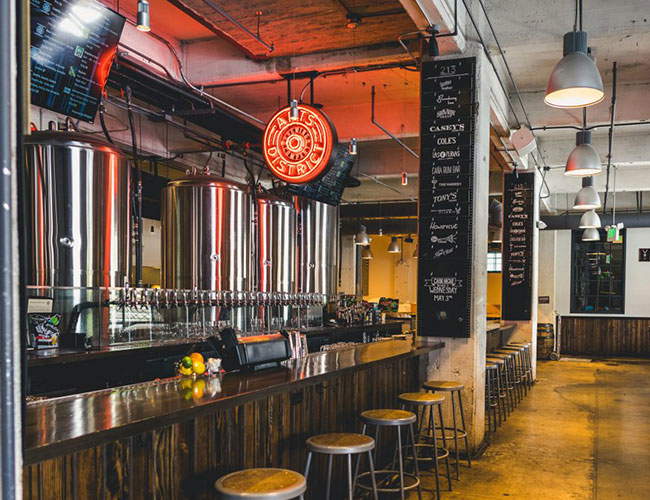
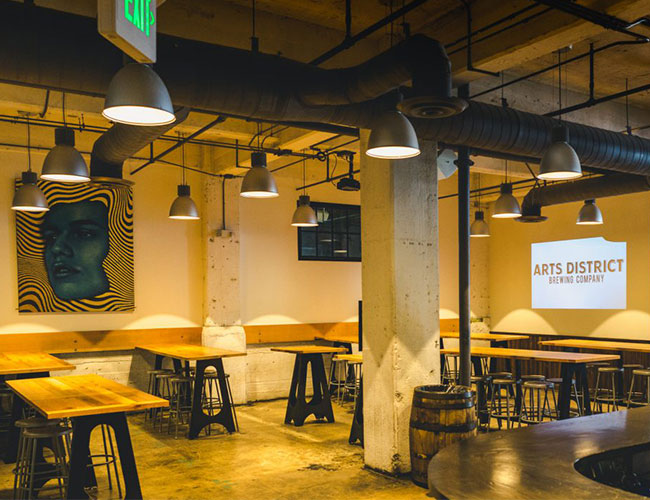
Their space, a 17,000 square foot warehouse on Traction Avenue, is a wide-open, game-filled craft beer mecca. There’s a Skeeball league, a photo booth, ping-pong tables, table hockey, air hockey, darts, oversized Jenga, and corn hole. There’s also a wide variety of brewed-in-house and locally distributed beer, an adjoining restaurant run by Chef Neal Fraser, and a main room, bar, and patio that seats 90 and houses up to 500. It’s a 15-barrel brewhouse that’s capable of brewing 3,300 barrels per year. The place is huge, and that wasn’t an accident.
The focus really is on the beer and the community that comes from it. “Our staff really are masters in the game of teaching people beer,” says Brian. “Maybe their experiences weren’t as positive in the past, but our job is to build on that experience and expand their palate.” This community, he believes, is really what has changed in LA. “This is for the neighborhood,” he says of the brewhouse. “It’s a one-stop-shop where people can eat, drink, hang out, and play. We want to keep people together.”

And, the “people” he’s referring to are a different generation than the one he catered to when he first entered this business, but, in a way, they’re sort of the same.
“It’s a one-stop-shop where people can eat, drink, hang out, and play. We want to keep people together.”
“The people drinking craft beer now had Dads who drank craft beer. They grew up on it,” says Brian. Which, in a way, is true. Even if this younger generation was raised by parents who drank Millers or Coors, there was a shift towards a “craftier” mindset. The young generation grew up valuing locally grown and manufactured products, innovative establishments and welcoming owners, and mixed use spaces.
“Part of that 17,000 square feet is the basement, too,” Brian says. “No one but us sees that but the people come here knowing the beer is locally made, in this same building, and they love that. We’re really just their new neighbor.”
“Neighborly” is not a new term for the newest bars in our nation’s biggest cities. Though some of the most famed and loved bars may have closed their doors — i.e. NYC’s The Candle Bar or Rodeo Bar — the ones that take their place aren’t ignorant of the shoes to fill; they’re just aware that today’s customer has changed a little, and that “surviving” requires more than just stocking the bar.

